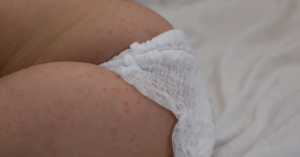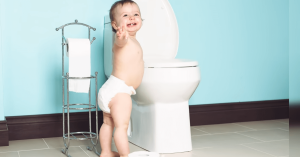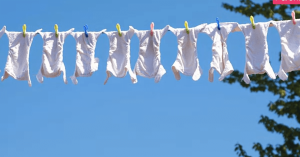Benefits of Cloth Diapers: A Sustainable and Healthier Choice for Your Baby

Disposables have long been the go-to choose for their convenience in diapering. But there’s a subtle revolution underway, and it’s called cloth diapers. Before you dismiss them outright, please take a moment to consider why cloth diapers might be the change you’ve been looking for when caring for your little one health and comfort.
As a parent, I was once firmly aboard the disposable diaper bandwagon. It wasn’t until I delved into the world of cloth diapers, researched cloth diapers properties and uncovered their positive impact on both my baby’s health and the environment that I became a passionate advocate. In this article, I aim to share the benefits of cloth diapers. What I’ve learned
Please understand that this is a personal perspective. I value every family’s individual needs and preferences, aiming to provide you with the information you need to decide aligned with your family’s lifestyle and values.
20 benefits of Cloth Diapers: How Cloth Diaper Benefits Can Truly Impact Your Baby’s Life!
- Cost-Effective Choice
- Environmental Friendliness
- Reduced Exposure to Chemicals
- Less Diaper Rash and Leaks
- Variety of Fabrics
- Early Potty Training
- Comfort for Babies
- Convenience of Supply
- Fewer Leaks and Messes
- Potential Benefits for Baby Boys
- Proper Waste Disposal
- Versatility of Cloth Diapers
- Diaper Services
- Flexibility
- Adaptability to Growth
- Adorable Appearance
- Low Maintenance
- Less water required.
- Odor Control
1-Cost-Effective Choice-An important benefit of cloth diapers.
Cloth diapers, often overlooked in favor of disposables, are a cost-effective and eco-conscious choice for parents. While disposable diapers may seem cheaper initially, cloth diapers shine in the long run, offering substantial savings.
With an initial investment of around $100-$200, cloth diapers can take your child from infancy to potty training, resulting in savings of approximately $1500 compared to the costs of the recurring disposable. Here is important statistics about diapers.
Cost comparison
| Type of Diapers | Monthly Cost | Diapers Per Week | Additional Notes |
| Cloth Diaper Service | Approximately $80 | 80 Diapers | Time-saving convenience, no extra expenses. |
| Owning Cloth Diapers | Approximately $250 | Set of 12 | Sustainable, long-term investment. |
| Disposable Diapers – Natural and Eco-Friendly | $100-$150 | Varies | Eco-conscious but higher cost. May vary by brand. |
| Disposable Diapers – Basic | Approximately $55 | Varies | More budget-friendly, potential chemical contents. |
2- Environmental Friendliness

Before potty training, the average baby uses around 6,000 disposable diapers. That’s just one baby!! Amplify this with the many newborns arriving daily, and you’ll comprehend the rapid accumulation of those diapers.
Because of this, cloth diapering is a great way to lower the carbon footprint. There are over 27.4 billion disposable diapers used annually in the United States.
The diapers end up in landfills, generating around 3.4 million tons of trash annually. Moreover, disposable diapers production, packaging, and transportation to the end consumer exert a significant ecological footprint. That is why they rank as the third most substantial contributors to landfill waste.
Nevertheless, there exists a viable alternative Using cloth diapers offers a simple and effective way to reduce environmental impacts while keeping your baby clean and comfortable.
Cloth diapers, often crafted from sustainable resources like hemp and bamboo, offer an eco-friendly alternative. If you want to do your part in protecting the environment, you can air-dry your clothes instead of using an electric dryer. It can significantly reduce your carbon footprint and help conserve energy.
3- Reduced Exposure to Chemicals
In a world of concerning chemicals, cloth diapers emerge as a safety beacon. We encounter alarming reports daily highlighting the pervasive presence of these chemicals in our food, skincare products, and even clothing.
Navigating the landscape of substances can be overwhelming. It can be challenging to differentiate between what is safe and what is harmful. However, cloth diapers stand as a reassuring exception when it comes to safety.
These diapers contain no chemicals whatsoever. Crafted from secure natural fibers, they are purposefully designed to cradle your baby’s delicate skin, offering an experience free from harsh chemicals.
Studies suggest that 60–70% of substances applied to the skin enter the bloodstream within 5 minutes. Contemplate this fact when you consider placing a petroleum- and chemical-based disposable diaper against your baby’s skin.
Choosing natural fiber diapers reduces exposure to harmful chemicals. This proactive choice reduces the likelihood of skin irritations, discomfort, and potential future health concerns.
For some children, pursuing comfort involves trying multiple types of disposable diapers, as some may irritate their sensitive skin. However, embracing cloth diapers from the start could spare these children from unnecessary discomfort, irritation, and the possibility of future health issues.
Disposable diapers, as previously mentioned, harbor a plethora of chemicals. These chemicals transform bodily fluids into a gel for a dry sensation on your baby’s skin and contribute to the diaper’s structure.
Among these chemicals are polyacrylate polymers, which, though not inherently odorous, can emit strong odors when wet, a common feature in disposable diapers. In addition, disposable diapers may contain traces of dioxin, a toxic by-product of paper bleaching, a known carcinogen.
In contrast, cloth diapers boast the advantage of minimal chemical presence. The only potential chemicals might be remnants of pesticides from the fiber production process. It underscores the importance of pre-washing cloth diapers to eliminate residual pesticide traces and enhance their absorbency.
Have you ever wondered why disposable diapers can absorb up to 100 times their weight? The answer lies in the copious chemicals and non-natural substances they contain. The primary absorbent material in disposable diapers is polyacrylate, also known as water-absorbing polymer, which has been scientifically proven to be non-toxic and safe for the skin.
However, it’s only one element among many inside a disposable diaper. Research conducted in France unveiled a startling revelation: disposable diapers harbor as many as sixty different chemicals, some of which have been banned in the country for an extended period.
Glyphosate, a herbicide that can cause health issues, and chlorine, which can disturb the natural balance of bacteria on a baby’s skin and affect their pH levels, are present in disposable products.
4- Less Diaper Rash and Leaks

Minimizing diaper rash and leaks is a top priority when caring for your baby. Cloth diapers offer a compelling solution to these concerns. Unlike disposable diapers that often contain irritating chemicals, cloth diapers are crafted from natural materials like cotton or hemp, ensuring a chemical-free composition that’s gentle on your baby’s sensitive skin.
Furthermore, the need for more frequent changes with cloth diapers reduces prolonged exposure to potential irritants, reducing the risk of diaper rash. These diapers also boast enhanced breathability, keeping your baby’s skin dry and healthy while their secure fit minimizes leaks.
Additionally, cloth diaper liners can be used to safeguard against diaper cream residue. In essence, cloth diapers provide a comfortable, chemical-free, leak-resistant diapering option for your little one.
5-Variety of Fabrics

One of the distinctive advantages of contemporary cloth diapers is their remarkable variety of fabric styles. Parents today need not grapple with the intricate task of folding fabric pieces to achieve a perfect fit for their baby’s nether regions. Instead, they are presented with a plethora of styles and fabric options, you can choose according to your needs.
The wonderful world of reusable infant diapers offers an array of high-quality materials that will impress. There are many options, from bamboo and organic cotton to hemp, modal, fleece, wool, and polyester. Some cloth diaper manufacturers even go the extra mile by blending these fabric varieties for ultimate comfort and performance. Be assured that our impressive selection perfectly matches your little one’s needs.
Furthermore, modern cloth diapers offer various fastening mechanisms, ranging from velcro snaps to pre-formed closures that easily slide on and off. This aspect becomes especially relevant when contemplating using cloth diapers during potty training.
Toddlers should be capable of independently removing their diapers as they embark on their journey toward self-sufficiency.
6-Early Potty Training

Numerous parents attest that cloth diapers have facilitated toilet training for their infants.
The rationale behind this assertion is rooted in the dissimilar characteristics of disposable and cloth diapers. Disposable diapers are meticulously engineered to maintain dryness for extended durations.
While this feature is convenient for parents, it may inadvertently hinder a baby’s comprehension of essential toilet-training cues.
In stark contrast, cloth diapers, though absorbent, do not possess the same moisture-retaining capacity as their disposable counterparts. Consequently, infants using cloth diapers promptly experience wetness, a fundamental signal for toilet training.
The tactile sensation of dampness prompts an early awareness of bodily functions, expediting the transition to toilet independence.
It is frequently posited that children who use cloth diapers tend to achieve toilet training milestones earlier. While every child develops at their own pace, certain factors support this theory.
Disposable diapers employ chemicals to wick away moisture, creating an illusion of cleanliness for the child. This deceptive sensation of dryness diminishes the child’s awareness of when they are fully saturated, thereby reducing discomfort cues.
Conversely, cloth diapers provide an unfiltered connection between the child’s skin and the moisture, enhancing their sensory perception of wetness. Its heightened awareness fosters an early understanding of toilet training from an early age.
Cloth diapers, in this context, emerge as a valuable tool in the quest for practical potty training and elimination communication.
While it is essential to acknowledge that each child’s toilet training journey unfolds uniquely, the notion that cloth diapers facilitate early potty training holds merit.
Disposable diapers excel at moisture absorption and containment, catering to a baby’s comfort. Nonetheless, the absence of wetness feedback diminishes the child’s consciousness of their state, potentially prolonging the transition to toilet independence.
As toddlers evolve, they may develop an aversion to the sensation of being wet. Cloth diapers, in their natural state, do not conceal wetness in the same manner as disposables.
The immediate sensory feedback of water or soiling prompts a child to consider transitioning to the potty sooner than they might with disposable diapers. Some parents passionately affirm that cloth diapers were pivotal in their child’s expedited potty-training journey.
7-Comfort for Babies

Babies, unable to articulate minor discomfort, often leave parents to interpret their well-being. When contemplating a baby’s comfort, cloth diapers are a favorable choice. Although it remains challenging to prove this theory empirically, several factors support the notion of cloth diapers offering enhanced comfort.
Cloth diapers are lightweight and breathable, differing markedly from airtight disposable counterparts. The absence of a plastic lining or padding in cloth diapers facilitates air circulation while effectively wicking moisture away from sensitive baby skin. This combination of breathability and moisture control is conducive to comfort.
Modern designs have significantly improved compared to the cumbersome cloth diapers of the past. Leaks are now less frequent, thanks to innovations such as snaps and Velcro closures replacing the once-dreaded safety pins.
Folding is no longer an arduous task, and the convenience of cloth diapers is further underscored by their cost-effectiveness, requiring a single purchase to last throughout a child’s diapering stage.
One paramount aspect contributing to the comfort of cloth diapers is using natural materials like cotton, bamboo, or hemp in their construction. These fabrics are highly breathable and comfortable against the skin.
Furthermore, cloth diapers necessitate more frequent changes due to the absence of moisture-absorbing chemicals, ensuring babies spend less time in wet conditions, which is undeniably more comfortable.
Additionally, cloth diapers inherently promote superior airflow and ventilation compared to their disposable counterparts, which are designed to be non-porous. Switching to cloth diapers often coincides with a commitment to more frequent diaper changes, resulting in less time spent in wet or soiled conditions – an unmistakable contributor to a baby’s comfort.
The absence of chemicals in disposable diapers further cements cloth diapers as preferable for baby comfort.
Disposable diaper brands have been known to contain potentially harmful substances like chlorine and latex, which can trigger skin reactions such as asthma and eczema.
In stark contrast, cloth diapers, crafted from fabric, forego these unnecessary chemicals, ensuring a toxic-free and breathable environment for a baby’s delicate skin.
8-Convenience of Supply
Cloth diapers ensure a constant supply if you remember to wash them regularly. Unlike disposables, you won’t have to rush to the store in diaper emergencies.
10-Fewer Leaks and Messes
You might find it surprising, but it’s a fact: those diaper disasters, known as blowouts, happen often with disposable diapers. Why? Disposable diapers have weaker elastic bands around the legs and waist, making it harder to keep everything contained.
Regarding diapering, cloth diapers are an excellent option. They have strong elastic bands around the waist and legs, and their mission is to ensure a snug fit and prevent any potential messes from escaping.
11-Potential Benefits for Baby Boys
A scientific investigation conducted in Germany involved 48 healthy males spanning from birth to forty-two months of age. The researchers employed a miniature probe to document the scrotal temperature of each participant over two distinct 24-hour intervals.
In one of these day-long periods, the boys sported plastic disposable diapers while they adorned reusable cotton diapers during the other. The findings of this study consistently revealed that the temperature was notably higher when the participants wore disposable diapers.
Now, what’s the significance of this discovery? Well, science has already furnished substantial evidence indicating that males exposed to prolonged periods of high temperatures in their nether regions tend to experience a decline in sperm count, which subsequently translates to reduced fertility.
One potential explanation for this phenomenon is that some males have testicles that fail to descend at the typical age, resulting in increased heat in that anatomical vicinity. To mitigate this concern, opting for the finest cloth diapers designed for boys is prudent.
12-Proper Waste Disposal
Switching to cloth diapers offers a greener and more hygienic way to deal with baby waste. Unlike disposable diapers, which end up in landfills, cloth diapers allow you to flush the waste down the toilet, following a natural path. It prevents contamination of soil and water.
It’s noteworthy that used diapers, even from healthy babies, can harbor harmful germs like salmonella and E. coli. Childcare centers take strict precautions to avoid spreading these germs. So, why risk adding these microbes to the ground?
Our toilet and washing machine water undergo a cleansing process to remove impurities, making flushing waste down the toilet an environmentally friendly and safer option.
But it’s manageable. You can easily remove and flush the mess if a diaper is soiled. Stains can be treated by soaking the diapers in water. Then, they can be washed in a machine with cold and hot cycles using a special diaper-friendly detergent. A final rinse ensures they are clean and ready for reuse.
13-Versatility of Cloth Diapers

Cloth diapers are the gift that keeps on giving! When your baby transitions to big kid undies, these trusty diaper alternatives don’t retire. Instead, they find new roles:
You can stash them away for your next bundle of joy if you plan on expanding your family. Sell or donate them if you don’t want to keep them to help other parents-to-be save money.
These cloth wonders can also moonlight as burp cloths or help with cleaning chores around the house. Get crafty and transform them into bibs if you’ve got sewing skills. And remember, they’re eco-friendly, so recycling is an option.
A first aid kit is crucial, and including one can be a lifesaver in emergencies. So, remember, cloth diapers are your sustainable, versatile pals even after the diaper phase is over!
14-Diaper Services
Cloth diaper services are a great option. They pick up your soiled diapers on a regular schedule and deliver fresh, clean, and sanitized ones. Finding a service near you is easy with a quick internet search or you can use diaper service Ottawa and Durham cloth diaper service.
The cost of diaper service for 12 months is $500-$900, excluding additional diapering supplies like wipes and a changing table. On average, these services cost about $18 to $24 a week in the U.S. If you’re hesitant about cleaning cloth diapers yourself or need clarification on the process, you can use cloth diaper companies that handle the cleaning. While it does add to the overall diaper expense, it spares you from the hassle of washing them yourself.
15-Flexibility
Cloth diapers are super flexible. You can use them when you want and switch to something else when you don’t. Cloth diapers are available in different types, so you can choose what suits your family. The key is to make sure they fit into your schedule You have many choices with cloth diapers, and it’s up to you. You can use them at home. Some people like them during the day but not at night. It’s your call.
The point is cloth diapers give you options, and every time you use them, you’re helping the environment by reducing disposable diaper waste in landfills. That’s a good thing.
16-Adaptability to Growth
One of the great things about cloth diapers is that they can grow with your child. You buy one size, and it works from when your baby is born until they’re ready for potty training. It saves you money in the long run because you won’t need to buy new diapers as your child grows.
17-Low Maintenance
Despite their reputation, cloth diapers are easy to maintain. Standard detergent can be washed in a machine without requiring unique treatments.
The process is simple: remove any solids, wash the soiled cloth diapers, and hang them to dry. They come out fresh and clean, ready to be used again. It also means you always have a steady supply of diapers, eliminating the need for emergency store trips.
Interestingly, many parents who switch to cloth diapers find it hard to return to disposables.
18-Adorable Appearance
It is not only practical but also eco-friendly to use cloth diapers. Various colors and patterns make these perfect for social media sharing and everyday use.
Even if you’re not using cloth diapers daily, having a few for decoration or photoshoots is a fun idea.
Although disposable diapers are a convenient option, they can cause damage to the environment and potentially contain harmful chemicals. Cloth diapers may mean more laundry, but their many benefits make them a rewarding choice.
19-Less water required.
Cloth diapers are often criticized for using a lot of water when washed. However, it’s important to note that making a single regular disposable diaper requires a significant amount of water—about 9 gallons or 34 liters. It involves processes like extracting petroleum and making wood pulp.
While eco-friendly cloth diapers use some water in their production, it’s much less than regular disposable diapers. Cloth diapers offer the advantage of multiple reuses, effectively minimizing the water consumption per diaper.
In summary, making and using disposable diapers results in a much higher water consumption—2.3 times more—than cloth diapers.
20-Odor Control

A notable drawback of disposable diapers is the chemical odor emanating when a baby wets them. In stark contrast, cloth diapers remain virtually odorless, which may seem surprising, but I’ve encountered numerous instances where I failed to notice my baby had soiled her cloth diaper.
This remarkable lack of odor can be attributed to two key factors. Firstly, cloth diapers lack the chemical components that trigger intense reactions. Secondly, the outer layer of cloth diapers, often composed of PUL (polyurethane laminate), adeptly contains any odors.
A faint scent might emerge upon opening a cloth diaper, but in this case, it’s not chemicals but the anticipated aroma of human bodily waste.
FAQs
Q-1 Why are cloth diapers better?
Numerous brands have been identified as harboring chlorine, latex, and other components that possess the potential to induce skin reactions such as asthma and eczema. In stark contrast, cloth diapers, fashioned from fabric, remain devoid of extraneous chemicals that might yield toxicity in your infant.
Q-2 Are cloth diapers worth it?
Cloth diapers are favored for their benefits to the environment and a baby’s delicate skin. Nevertheless, they exhibit a lower absorbency than disposables, necessitating more frequent changes.
Q-3 How long do cloth diapers last?
Expecting a single set of cloth diapers to endure beyond 2-3 years without acknowledging wear and tear is unrealistic, a fact recognized even by manufacturers.
Q-4 Do pediatricians recommend cloth diapers?
According to Prof. Dr. Dhanasekhar Kesavelu, a Pediatrician at Super Bottoms, cloth diapers are the ideal choice for protecting a baby’s delicate diaper area, given their skin-friendliness and affordability, reducing the risk of ammoniacal dermatitis.
Q-5 Do I need to use cloth wipes with my cloth diapers?
Yes, because Disposable wipes can be just as problematic as disposable diapers and are less convenient when using cloth diapers.
Q-6 What is a major disadvantage of using cloth diapers?
A significant drawback of cloth diapers is their higher initial expense than disposables, including the cost of diapers and accessories like liners and covers.
Q-7 How many hours cloth diapers can be used?
For the well-being of your infant’s skin, aim to switch cloth diapers every two hours to prevent potential rashes.
Q-8 Do cloth diapers catch pee?
Yes, many pocket cloth diapers incorporate a stay-dry lining, ensuring that the baby perceives dryness despite being wet, as the urine traverses the diaper lining and is subsequently absorbed by the insert.
Q-9 Do cloth diapers smell?
Cloth diapers should remain odorless, except for the scent of detergent if you opt for a scented one.
Q-10 Do cloth diapers last all night?
Cloth diapers are suitable for overnight use, with most babies requiring standard absorbency and occasional extra inserts for nighttime comfort.
Final thoughts on benefits of cloth diapers
We hope the benefits of cloth diapers are abundantly clear. From their eco-friendliness, cost-effectiveness, and superior containment of odors to their endearing designs and long-term savings, cloth diapers emerge as a smart and conscientious choice for your baby and the environment.
By embracing cloth diapers, you provide comfort and care for your child and contribute to a greener, more sustainable future. It’s a decision that benefits both the present and generations to come.
Also Read –
- How to clean cloth diapers.
- How to sanitize cloth diapers
- How to strip cloth diapers
- How often you change a cloth diaper
- How to use cloth diapers.
- How to use cloth diapers with inserts.
- Cloth diapers vs disposable pros and cons.
- Cloth diaper advantages and disadvantages
- function of cloth diapers
- where do cloth diapers come from?
- what is a cloth diaper made of?
- How cloth diapers work?
- Benefits of cloth diapers vs disposable
- uses of cloth diapers
- Types of cloth diapers
- Benefits of cloth diapers
- All in two cloth diapers
- Fitted cloth diapers
- All in one cloth diapers


3 thoughts on “Benefits of Cloth Diapers”